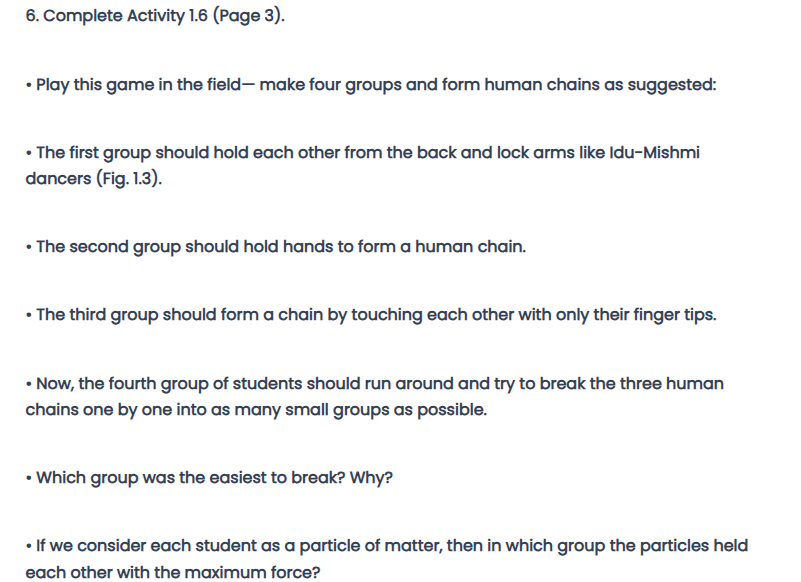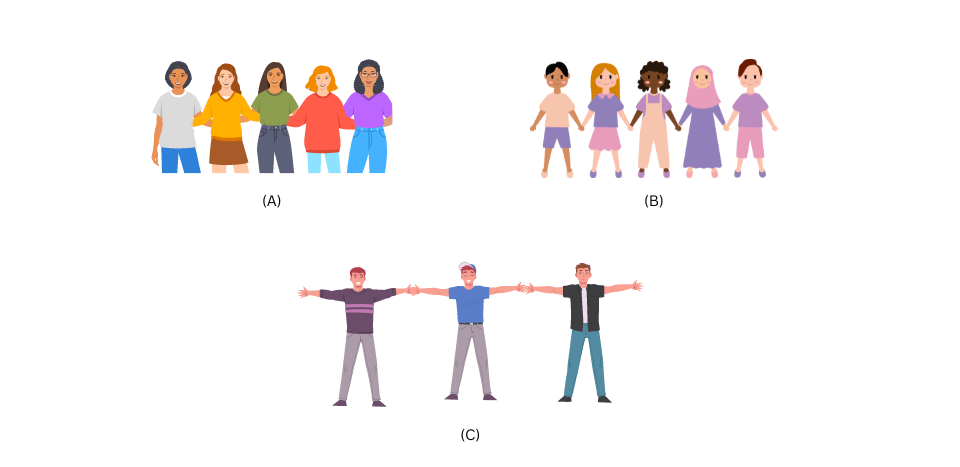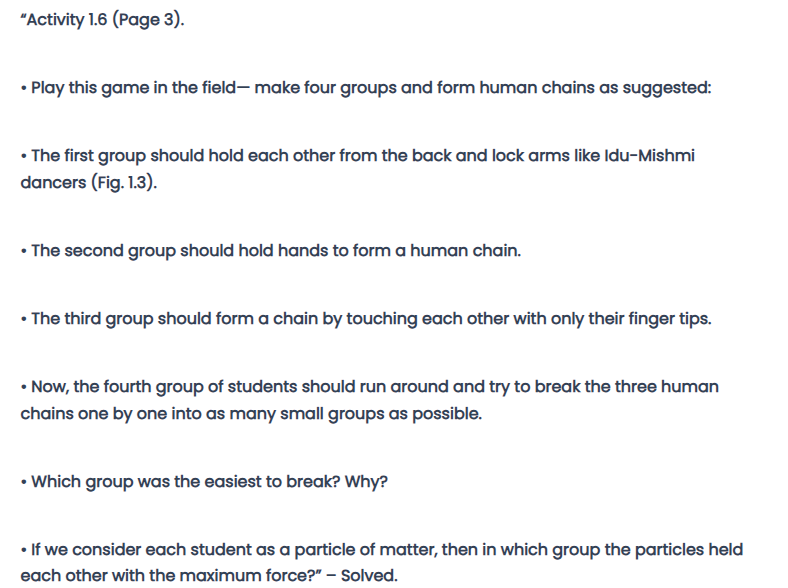
Answer:
Aim: To observe which group was easier to break and make the necessary conclusions.
Materials Required: Four groups of several students.
Procedure:
(i) The first group of students should hold each other from the back and lock arms as shown in (A).
(ii) The second group of students should stand side by side and hold hands to form a human chain as shown in (B).
(iii) The third group of students should stand side by side and form a chain by touching each other with only their finger tips as shown in (C).

(iv)Now, the fourth group of students should run around and try to break the three human chains shown in (A), (B) and (C) into as many small groups as possible. The observations are to be noted.
Observations:
- The third chain shown in (C) was the easiest to break.
- The second chain shown in (B) was harder to break.
- The first chain shown in (A) was the hardest to break.
Conclusions:
- Locking arms provided the strongest physical connection and support. If the students represent particles of matter, then the particles held each other with the maximum force in the first group shown in (A).
- The strength of the human chain represents the forces of attraction between particles of matter. Different methods of connection represent different levels of force and stability.

Related Links:
Solution to Group Activity
Solution to Activity 1.1
Solution to Activity 1.2
Solution to Activity 1.3
Solution to Activity 1.4
Solution to Activity 1.5
Solution to Activity 1.7
Solution to Activity 1.8
Solution to Activity 1.9
Solution to Activity 1.10
Solution to Activity 1.11
Solution to Activity 1.12
Solution to Activity 1.13
Solution to Activity 1.14
Solutions to Chapter 1 Matter in Our Surroundings


